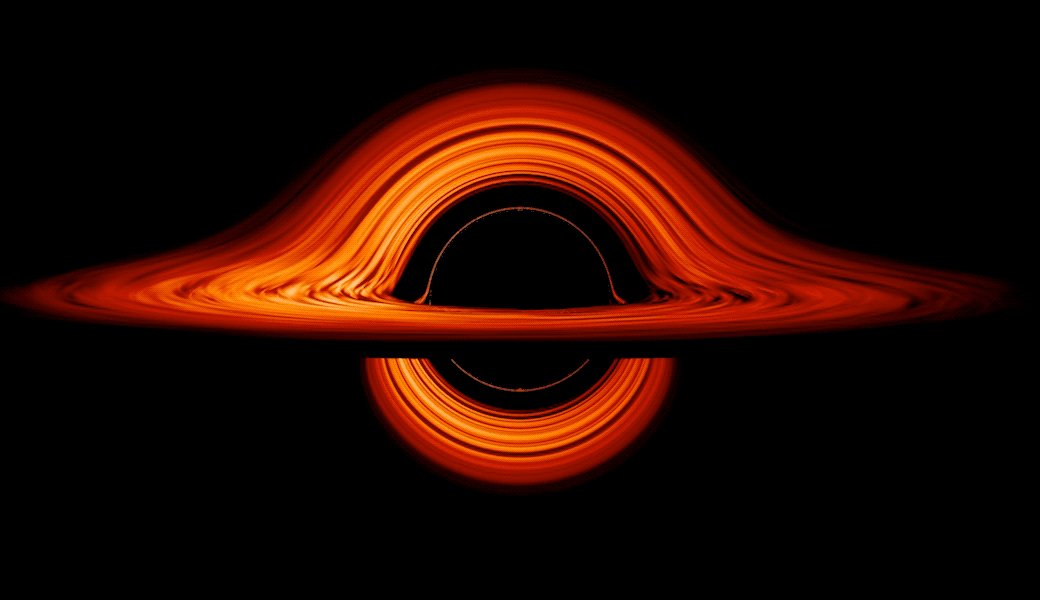
Accretion disks around compact objects represent a unique setting in which matter moves at highly relativistic speed deep within the gravitational potential well of the central black hole (BH) or neutron star (NS), and their role as probes of the stationary strong field regime is complementary to the one played by the dynamical mergers detected through gravitational wave analysis. By studying these systems, we can observe effects of general relativity (GR) such as the bending of light trajectories, gravitational redshift, and frame-dragging by fast spinning BHs. Conversely, they provide an arena in which such predictions of GR can be tested separate from the dominant weak-field test benches [1].
The analysis of these sources' X-ray spectra allow us to investigate the parts of the disk closer to the compact object, through features such as:
1) the still puzzling quasi-periodic oscillations (QPOs) in the light curve [2], which have been studied by our group since the very beginning, also providing one of the main models to explain them, the relativistic precession model [see e.g., 3, 4, 5];
2) the widely studied iron K-α line profiles, whose shape is determined by the interplay of many general relativistic effects [6], that can shed light on both system parameters such as the composition, size and geometry of the disk, or the BH spin, and on some of the finer effects of GR arising under such conditions [7].
Both the Fe K-α line profiles and QPOs can also be used to constrain the Equation of State of ultradense matter within NSs, which represents one of the main open questions in astrophysics and nuclear physics [8,9].
We're also excited to say that a new era of X-ray observations will soon start thanks to near-future instruments such as eXTP, IXPE and possibly STROBE-X, whose large effective area and/or focus on polarization studies will open a whole new window on these extreme systems!
If you are interested in a thesis regarding accretion disks and strong-field gravity here you can find available theses about this topic.
Involved group members: Luigi Stella, Riccardo La Placa
References
[1] Berti, E., Barausse, E., Cardoso, V., Gualtieri, L., et al. 2015, Classical and Quantum Gravity, 32, 243001, "Testing general relativity with present and future astrophysical observations"
[2] Ingram, A. R., Motta, S. E. 2019, New Astronomy Reviews, 85, 101524, "A review of quasi-periodic oscillations from black hole X-ray binaries: Observation and theory"
[3] Stella, L., Vietri, M. 1998, The Astrophysical Journal, 492, L59, "Lense-Thirring Precession and Quasi-periodic Oscillations in Low-Mass X-Ray Binaries"
[4] Maselli, A., Gualtieri, L., Pani, P., Stella, L., Ferrari, V. 2015, The Astrophysical Journal, 801, 115, "Testing Gravity with Quasi-periodic Oscillations from Accreting Black Holes: The Case of Einstein-Dilaton-Gauss-Bonnet Theory"
[5] Casella, P., Belloni, T., Homan, J., Stella, L. 2004, Astronomy and Astrophysics, 426, 587, "A study of the low-frequency quasi-periodic oscillations in the X-ray light curves of the black hole candidate XTE J1859+226"
[6] Fabian, A. C., Rees, M. J., Stella, L., White, N. E. 1989, Monthly Notices of the Royal Astronomical Society, 238, 729, "X-ray fluorescence from the inner disc in Cygnus X-1."
[7] Falanga, M., Bakala, P., La Placa, R., De Falco, V., et al. 2021, Monthly Notices of the Royal Astronomical Society, 504, 3424, "Exploring higher order images with Fe Kα lines from relativistic discs: black hole spin determination and bias"
[8] La Placa, R., Stella, L., Papitto, A., Bakala, P., et al. 2020, The Astrophysical Journal, 893, 129, "Neutron Star Radius-to-mass Ratio from Partial Accretion Disk Occultation as Measured through Fe Kα Line Profiles"
[9] Maselli, A., Pappas, G., Pani, P., Gualtieri, L., et al. 2020, The Astrophysical Journal, 899, 139, "A New Method to Constrain Neutron Star Structure from Quasi-periodic Oscillations"
[10] De Rosa, A., Uttley, P., Gou, L., Liu, Y., et al. 2019, Science China Physics, Mechanics, and Astronomy, 62, 29504, "Accretion in strong field gravity with eXTP"